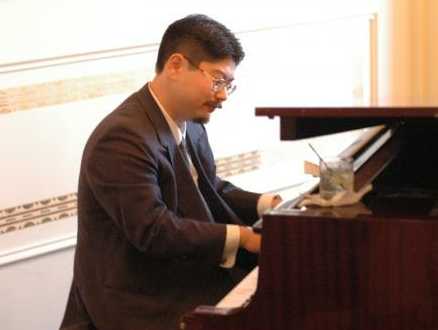It Pays to Know the Right People
Well, specifically: it pays to know R. Her company is a corporate sponsor of the DeCordova Museum, so as a result, she (and a guest!) can get in for free. So a few weeks ago, we did a bike trip from Watertown out there, and spent an afternoon checking out the museum.
But it gets even better! Because of the corporate sponsorship deal, this past weekend, we got into the opening of the newly installed exhibit: The Old, Weird America: Folk Themes in Contemporary Art.
This summer DeCordova Sculpture Park + Museum will host the award-winning traveling show The Old, Weird America, the first museum exhibition to explore the widespread resurgence of folk imagery and mythic history in recent art from the United States. Organized by Contemporary Arts Museum Houston senior curator Toby Kamps, the exhibition illustrates the relevance and appeal of folklore to contemporary artists, as well as the genre’s power to illuminate ingrained cultural forces and overlooked histories. The exhibition borrows its inspiration and title—with the author’s blessing—from music and cultural critic Greil Marcus’ 1997 book of the same title that examines the influence of folk music on Bob Dylan and The Band’s seminal album, The Basement Tapes.
Full on reception and everything. Including good beer!

The exhibits were a somewhat odd mix; sculpture, drawing, and photography, loosely linked by a general theme of Americana, ranging between Native American themes, the Civil War, the violence endemic in our history, and nineteen portraits of Abraham Lincoln impersonators. The WBUR story on the exhibit is here.
We got to walk through part of the sculpture garden afterwards; I particularly liked this one: Rick Brown's Butterfly (2004). I only found out by reading the website blurb that the artist's intent is to change the work over time:
Rick Brown's site-specific sculpture comprised of numerous concrete spheres and rectangular rods will be displayed in the Sculpture Park for several years. During this time, the artist will occasionally return to DeCordova to rearrange elements of his composition. The concept of Butterfly is based on the passage of time and resultant change, and the alterations Brown will make to the work will be responses to external stimuli other than the sculpture itself.

There is definitely a sign that states, "Do Not Climb on or Touch the Sculpture." Ooooh... but it looks so climbable ;) We both geeked out about the piece--both in terms of "what it means," as well as bits of concrete geekery ("... just how did they form these spheres? Wait... you can see the fill port left over on this sphere here....")
And this one made me laugh out loud--it appears to be a brand new installation. I like it a lot:

I didn't find a caption for it yet. The caution tape might just be temporary, for letting the grass grow back... but I think it adds more to the installation--e.g., random giant stick figure falls from the sky, so we need to put caution tape around it.
On an only-loosely-linked note, an amusing sign for the restrooms at Upper Crust Pizza in Harvard Square:



2 Comments:
I think I would read the big red man as: "Warning. Quicksand."
Thanks for the great post!
Apparently, the big stick man is Douglas Kornfeld's Ozymandias
OZYMANDIAS is a colossal monument to "Man" sinking in the Main Lawn of the DeCordova Sculpture Park. Employing the ubiquitous contemporary symbol for man in giant scale, the artist, Douglas Kornfeld questions how cultural icons can reflect and represent the societies that construct them. Inspired by the visual and literary records of 19th century Napoleonic expeditions to Egypt, Kornfeld titles the sculpture, "Ozymandias" another moniker for Egyptian Pharaoh Ramses the Great (1279-1212 BCE) known for his extensive building campaigns and for erecting colossal statues of himself allover Egypt, and as a reference to Percy Bysshe Shelley's 1818 poem of the same name.
Post a Comment
<< Home